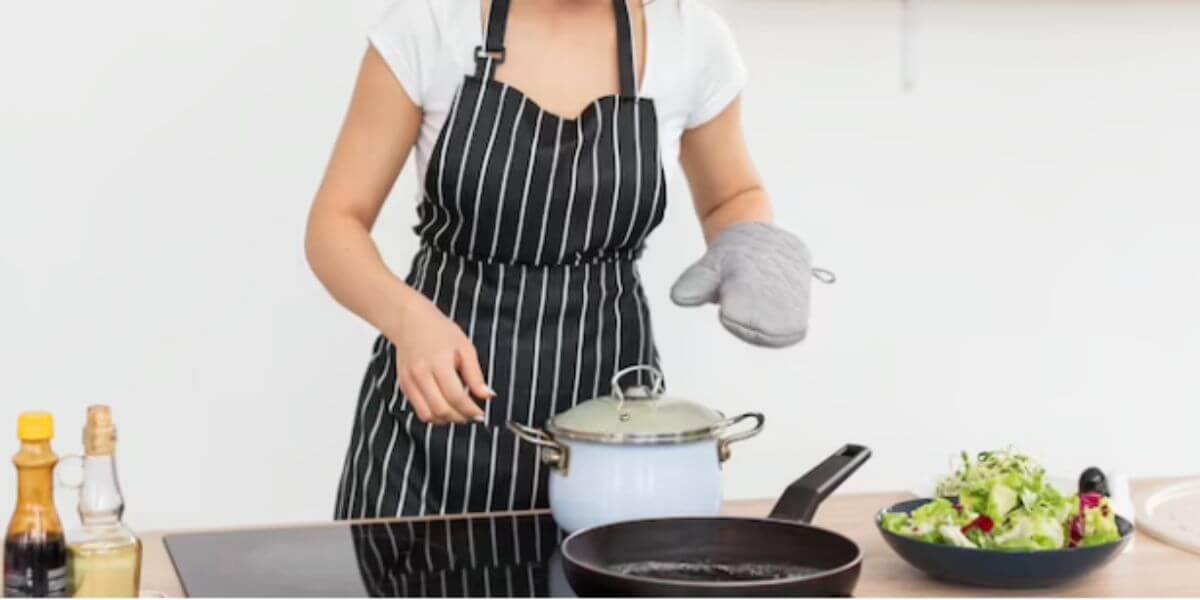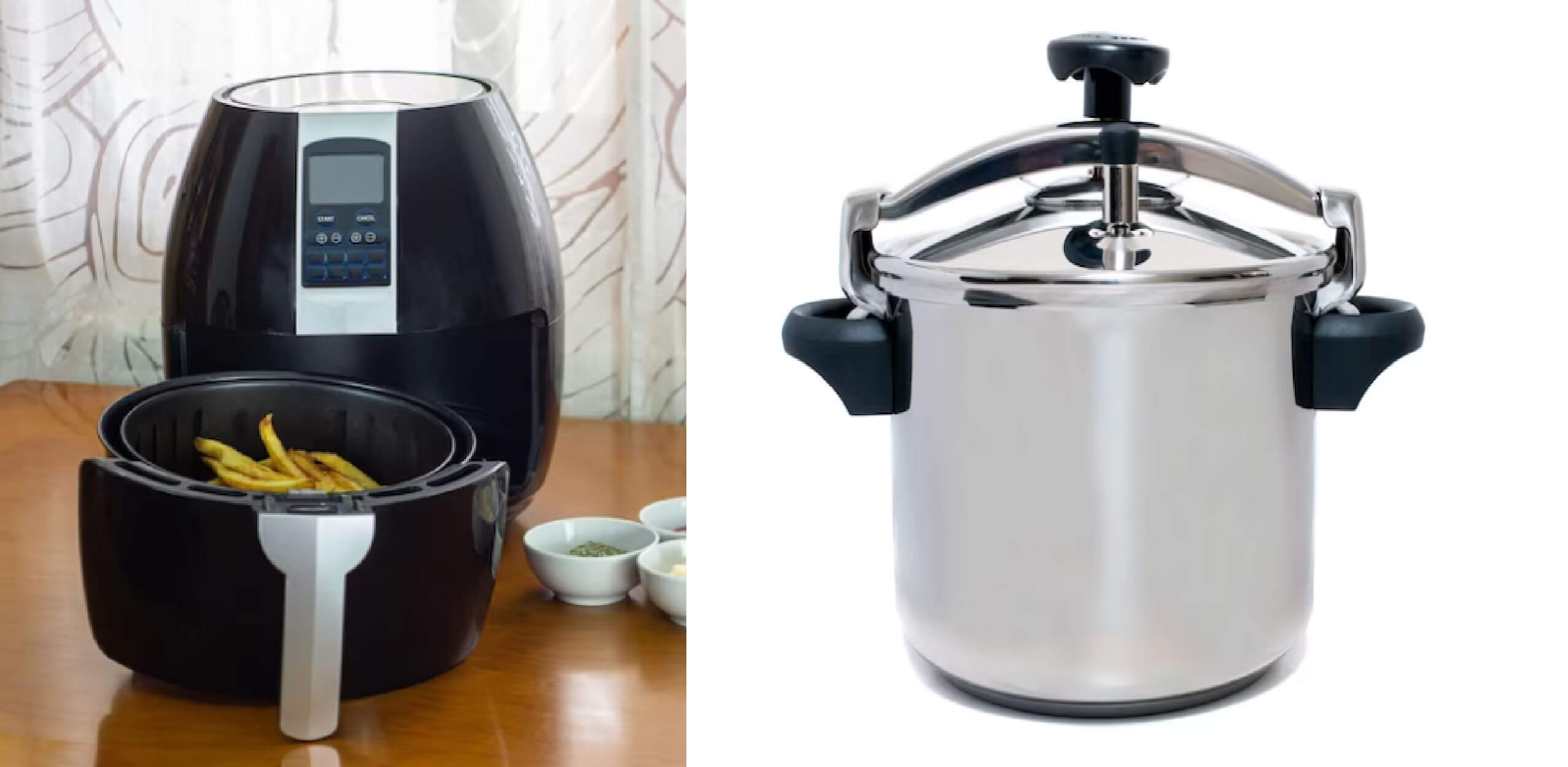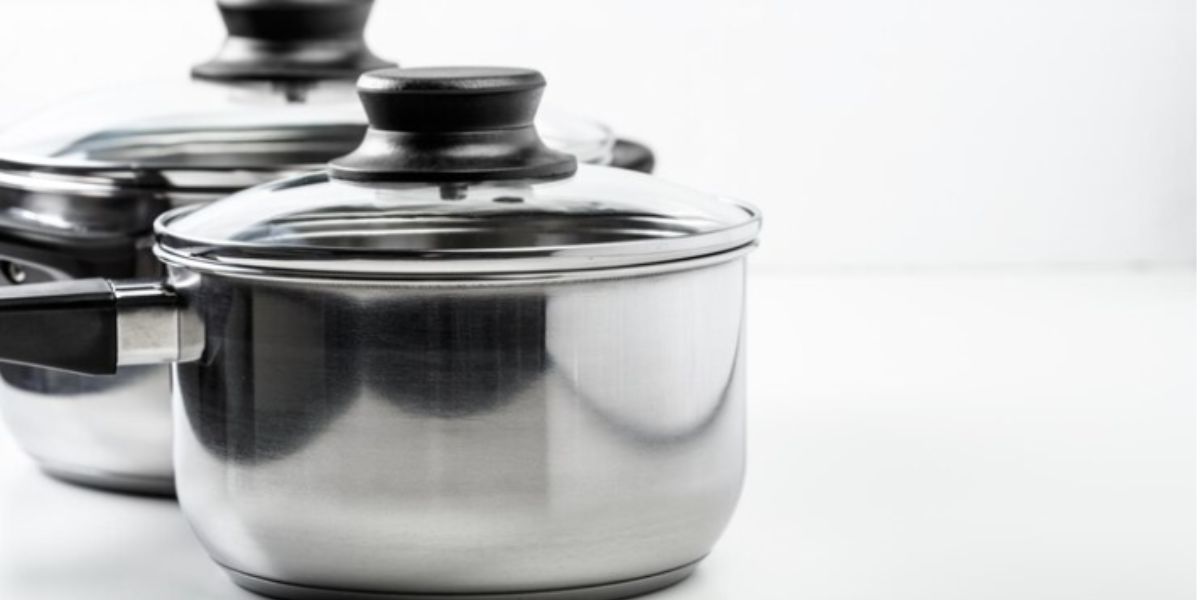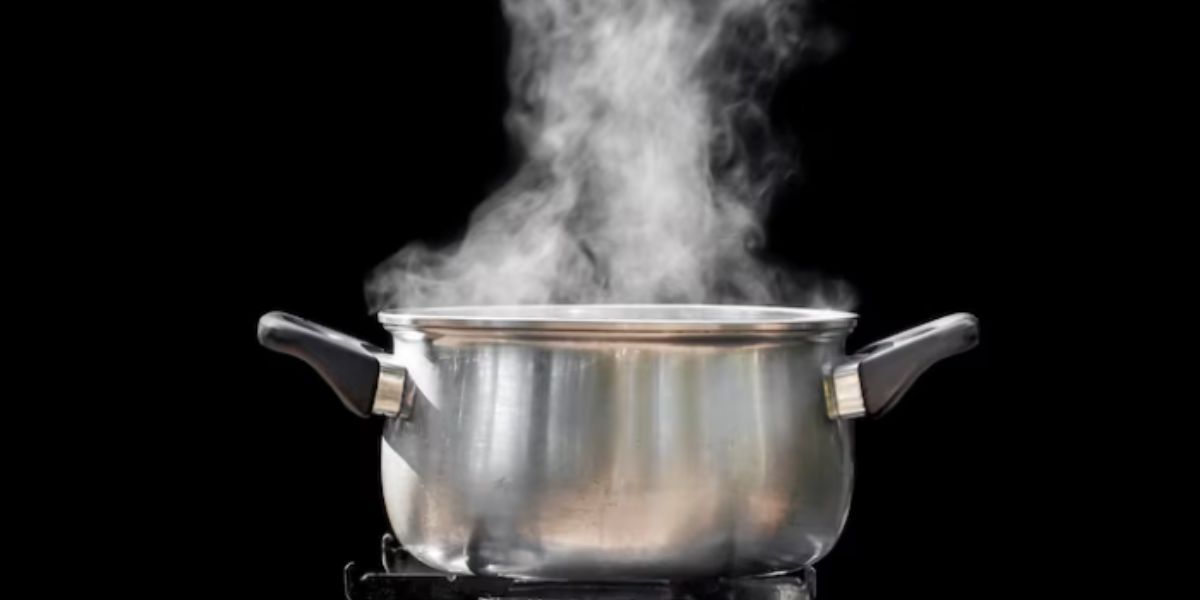Difference Between Pressure Cooker and Pressure Canner: The Best One?
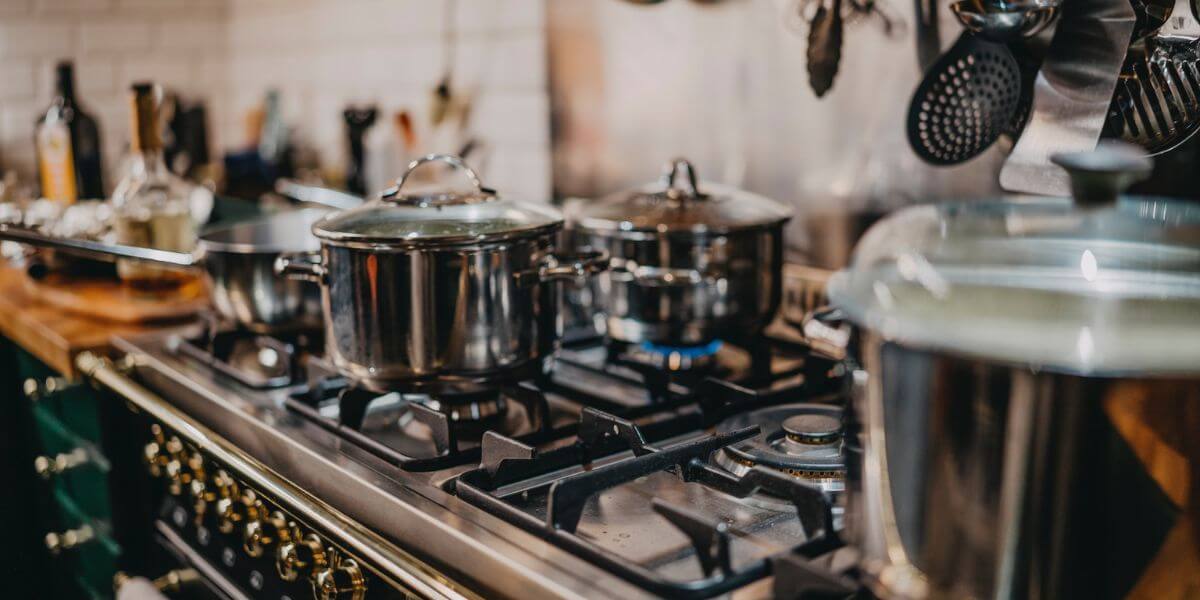

Pressure cookers and pressure canners are two essential kitchen appliances that utilize high-pressure steam for cooking or preserving food. While they share similarities, there are distinct differences between the two. This article will explore the dissimilarities in design, purpose, capacity, safety features, applications, and more, helping you understand the critical difference between pressure cooker and pressure canner.
Introduction
Pressure cooking and pressure canning are time-efficient methods of preparing and preserving food. Both techniques involve cooking under high pressure, but the primary difference lies in their intended purposes. Let’s delve deeper into each appliance and its unique features.
What is a Pressure Cooker?

Definition and Purpose
A pressure cooker is a container for cooking food tightly sealed and uses steam pressure to cook food quickly. Pressure cookers increase the boiling point of water by sealing off an area, which raises the temperature at which food may be cooked. The high pressure and heat significantly reduce cooking time, making it a popular choice for busy individuals.
Types of Pressure Cookers
Pressure cookers come in various types, including stovetop pressure cookers, electric pressure cookers, and microwave pressure cookers. Stovetop pressure cookers are the traditional ones used on gas or electric stoves, while electric pressure cookers are standalone appliances that require an electrical outlet. On the other hand, microwave pressure cookers are specially designed for microwave use.
What is a Pressure Canner?


Definition and Purpose
Unlike pressure cookers, pressure canners are primarily used for preserving food. They are designed to create a high-pressure environment that tightly kills bacteria and seals jars. Thanks to pressure canning, low-acid items, such as vegetables, meats, and seafood, can safely keep without refrigeration.
Types of Pressure Canners
Pressure canners can be categorized into two main types: stovetop pressure canners and electric pressure canners. Stovetop pressure canners function similarly to stovetop pressure cookers and use on gas or electric stoves. On the other hand, electric pressure canners are standalone appliances with built-in heating elements and control panels.
Differences in Design and Construction (Pressure Cooker and Pressure Canner)
Pressure Cooker Design
Pressure cookers are typically constructed with durable materials like stainless steel or aluminum. They feature a tightly sealed lid with a pressure release valve, a locking mechanism, and a pressure gauge or indicator. The design aims to create a secure, airtight cooking environment to maximize pressure buildup.
Pressure Canner Design
Pressure canners, designed for canning purposes, are built with safety and preservation in mind. They are generally larger than pressure cookers and often have multiple layers, including a removable rack for organizing canning jars. Pressure canners also incorporate features like a weighted gauge, a vent pipe, and a safety fuse to control pressure and prevent accidents.
Capacity and Size Differences
Pressure Cooker Capacity and Size
Pressure cookers are available in various capacities, typically measured in quarts or liters. Standard sizes range from 4 to 8 quarts, with more extensive options available for commercial or industrial use. You must choose a size depending on how much food you make and how many people you usually cook for.
Pressure Canner Capacity and Size
Pressure canners are generally larger than pressure cookers to accommodate multiple jars for canning. They come in sizes starting from 10 quarts and can go up to 30 quarts or more. The capacity of a pressure canner determines the number of jars it can hold during the canning process.
Cooking vs. Canning Applications
Cooking with a Pressure Cooker
The rapid cooking of various meals, including cereals, beans, meats, and vegetables, is a strength of pressure cookers. They are ideal for preparing hearty stews, soups, risottos, and desserts. With a pressure cooker, you can achieve tender and flavorful results in a fraction of the time compared to traditional cooking methods.
Canning with a Pressure Canner
Pressure canners are designed for canning foods by preserving them in jars at high temperatures. The canning process involves packing the jars with prepared food, sealing them, and placing them in the pressure canner. The high pressure and heat eliminate harmful bacteria, ensuring canned goods’ safety and long-term preservation.
Safety Features and Regulations
Pressure Cooker Safety Features
Pressure cookers incorporate various safety features to prevent accidents and ensure reliable performance. These features may include a locking system that prevents opening under pressure, a pressure release valve for controlled steam release, and a safety plug that acts as a backup in case of excessive pressure buildup. Additionally, modern pressure cookers often have indicators or pressure valves that offer visual cues for pressure levels.
Pressure Canner Safety Features
Pressure canners prioritize safety due to the high pressures involved in the canning process. They typically have safety mechanisms like a vent pipe or weighted gauge to release steam and regulate pressure. Pressure canners may also have a locking system to prevent opening while under pressure, ensuring the canning process remains secure and free from potential hazards.
Regulatory Standards
Both pressure cookers and pressure canners must adhere to safety and quality standards set by regulatory bodies. For example, the Underwriters Laboratories (UL) provides certifications for pressure cookers and canners that meet their safety requirements. Always look for reputable brands and products with rigorous testing and certification.
Cooking and Canning Methods
Cooking Methods with a Pressure Cooker
When using a pressure cooker, you can use various cooking methods, including steaming, braising, stewing, and baking. The sealed environment and high-pressure steam help infuse flavors, tenderize tough cuts of meat, and retain the nutrients of the ingredients. You can achieve consistent and delicious results with precise control over cooking time and pressure.
Canning Methods with a Pressure Canner
Pressure canning involves specific steps to ensure food’s safe and effective preservation. The canning process typically includes preparing the food, packing it into sterilized jars, securing the lids, and placing the pots in the pressure canner. The canner is then heated to reach the desired pressure, maintaining it for the recommended time to destroy bacteria and create a proper seal.
Versatility and Flexibility
Pressure Cooker Versatility
Pressure cookers provide you flexibility in the kitchen and let you quickly create a variety of recipes. Different ingredients and cooking methods, including simple weeknight meals and complex recipes, can handle by pressure cookers. They also suit various dietary preferences, including vegan, vegetarian, or gluten-free cooking.
Pressure Canner Flexibility
While pressure canners have a specific purpose—preserving food through canning—they can still be versatile appliances. Apart from canning, pressure canners can use large-capacity pressure cookers for regular cooking. You can prepare meals in bulk, such as batch cooking for freezing or hosting gatherings where you need to cook large quantities of food.
Cost Comparison (Pressure Cooker and Pressure Canner)
Several factors come into play when comparing the costs of pressure cookers and pressure canners. Pressure cookers, being smaller and more widely available, tend to have a lower price range. Electric pressure cookers often come with additional features and programmable settings, making them slightly more expensive than stovetop models. On the other hand, pressure canners, especially larger ones, can be pricier due to their size and specialized canning features.
Pros and Cons of Pressure Cookers
Pros
- Rapid cooking time saves time and energy.
- Retains flavors, nutrients, and textures.
- Versatile for a wide range of recipes and ingredients.
- Offers convenience and ease of use.
Cons
- Smaller capacity may not be suitable for large families or batch cooking.
- Limited to cooking applications only.
Pros and Cons of Pressure Canners
Pros
- Allows safe and long-term preservation of low-acid foods.
- Can store canned goods for an extended period without refrigeration.
- Offers larger capacities for canning multiple jars.
- Can also function as a pressure cooker for regular cooking.
Cons
- Larger sizes may require more storage space.
- Can be more expensive than pressure cookers.
- Specialized use limits versatility for non-canning purposes.
Conclusion
In summary, pressure cookers and pressure canners serve distinct purposes in the kitchen. Pressure cookers are versatile appliances that excel at fast and efficient cooking, providing tender and flavorful results. On the other hand, pressure canners specialize in canning and long-term preservation of low-acid foods, ensuring food safety and storage convenience. When choosing between the two, consider your cooking and preservation needs and the versatility and capacity required for your household.
Frequently Asked Question
Can I use a pressure cooker as a pressure canner?
While some pressure cookers may offer canning capabilities, it generally recommends using a dedicated pressure canner for canning purposes. Pressure canners are designed to reach and maintain the high temperatures and pressures required for safe food preservation.
What types of foods can be cooked in a pressure cooker?
Pressure cookers can cook various foods, including meats, grains, legumes, vegetables, soups, stews, and desserts. It’s a versatile appliance that allows you to experiment with various recipes and ingredients.
Can I use a pressure canner for regular cooking?
Pressure canners can use as large-capacity pressure cookers for regular cooking. However, their larger size and specialized design make them more suitable for canning and preserving food.
Are pressure cookers and pressure canners dishwashers safe?
Many pressure cookers and pressure canners have dishwasher-safe components, such as removable sealing rings and racks. However, it is essential to consult the manufacturer’s instructions for specific cleaning guidelines and recommendations.
How do I choose between a pressure cooker and a pressure canner?
Consider your primary needs and intended use. A pressure cooker is better if you prioritize fast and versatile cooking. Investing in a pressure canner would be more suitable if you preserve and store low-acid foods for extended periods. Assess each appliance’s capacity, features, and safety standards to make an informed decision.
